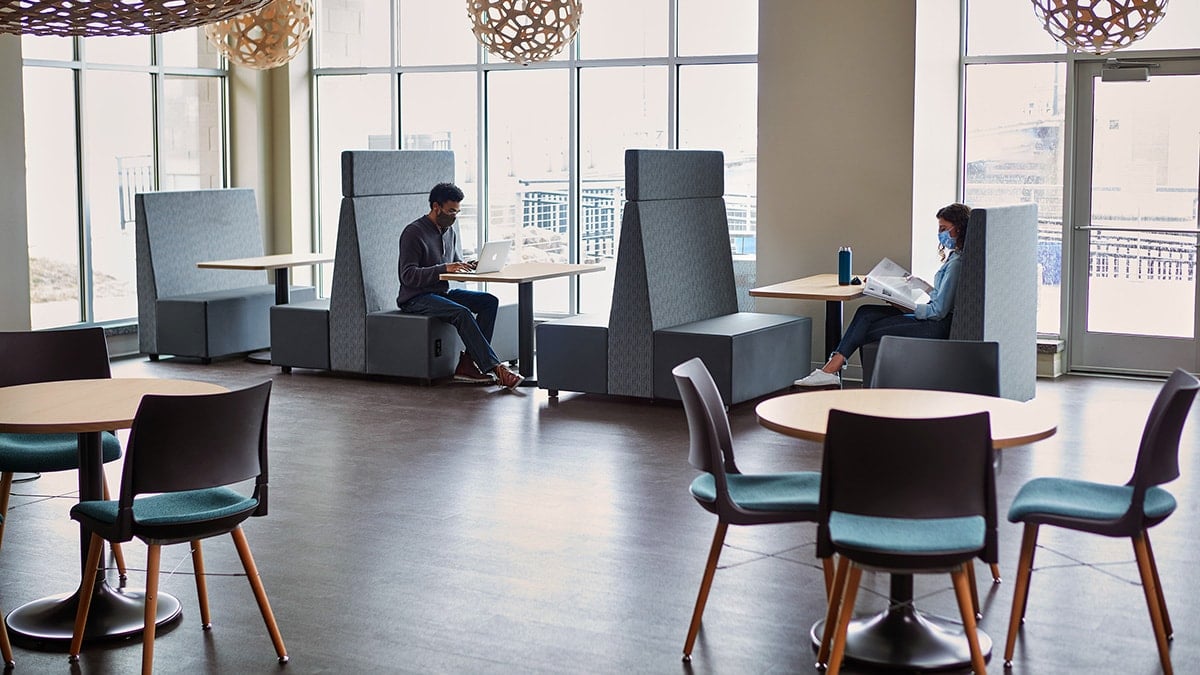Workplace Trends to Watch in 2021

A vaccine for COVID-19 has finally arrived. Over the next few months, millions of Americans will get their shots. And that’s prompting many employers to begin planning for the return of their employees to the office.
Over the course of 2020, we explored how employers adapted their workplaces to the realities of the pandemic. We also surveyed customers to identify their concerns about returning to work and -- how to address them.
The workplace this year will certainly look different than it did one year ago. Below, we share our top workplace predictions for 2021.
1. “Person-alize” the Workplace: A Return to the Office
Nearly 85 percent of CEOs want their teams to be working in person this year, according to a recent survey by Best Practice Institute.
The vast majority of workers miss the office, too. A recent Gensler survey found that more than four in five people would prefer to work in the office at least one or two days a week, if not more.
The workplace is more than just an office. It’s a place to socialize and make connections with mentors and friends. According to Gensler, 45 percent of workers say they form “most of their new friendships” in the workplace.
Employers will have to keep an eye on education trends for 2021 as well. Many parents won’t be able to return to the office until schools reopen for in-person learning.
2. A Renewed Focus on Ideation and Interaction
At the beginning of the pandemic, people transitioned relatively seamlessly to completing their individually-driven work at home. But collaborating with others remotely was much more difficult, even with videoconferencing software. Zoom is not a perfect substitute for real-life interaction. More than half of employees and nearly two-thirds of senior leadership surveyed by Gensler say that their jobs rely on in-person collaboration.
We expect employers will prioritize workspaces for ideation and interaction over spaces for focused work. To do so while maintaining office health and safety, businesses will likely adopt hybrid work models. KI research indicates that employees support this approach; 52 percent of respondents to our survey said they wanted remote work to remain a permanent option.
Flexible remote work policies enable employers to de-densify the office for safe collaboration. Employers might change a meeting room’s maximum capacity from eight people to four people. They might try out larger, 8-foot-by-8-foot versions of individual WiggleRoom privacy pods, where a small group of employees can host a brainstorming session in a designated space with frequent air circulation.
With these changes, we may finally see a shift away from workspaces where each employee has an assigned workstation. Instead, we’ll see offices characterized by interactive spaces and active design strategies that encourage employees to move around.
3. Beyond Zoom: Purposeful Use of Technology
According to our survey research, companies that quickly adopted technology during the pandemic were able to better maintain their day-to-day business operations.
We expect employers will explore technologies that also support safer in-person collaboration in the office. Employees might use an online portal to see which collaboration pods are booked in advance, so they can plan which days they’ll spend in the office and which days they’ll work from home.
In the office itself, employers might install occupancy sensors that show how many more people can enter a room or a pod -- and beep if it gets too crowded. They might equip conference rooms with big-screen televisions, wide-angle webcams and microphones at each seat to facilitate meetings with dozens of remote employees over video.
Deliberate Use of Space
Last year, we predicted that the line between our personal and professional lives would continue to blur -- and that employers would need to design their workplaces to “help employees balance the demands of family, health and well-being.”
We were right about the workplace emerging as a key source of community -- but not in the way we imagined.
In 2021, we have no doubt that employers will focus on facilitating collaboration among employees -- whether entirely in the office or partially supported by technology.
Subscribe
Stay up to date with the latest trends and more.






